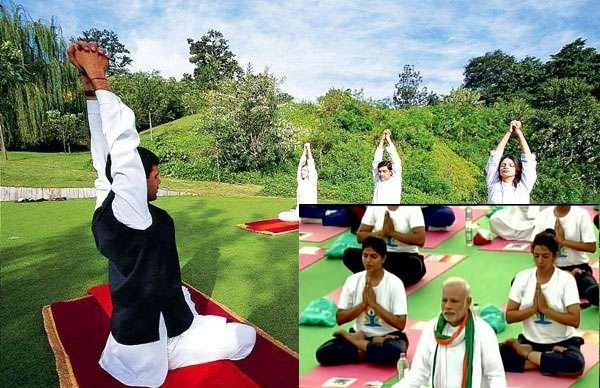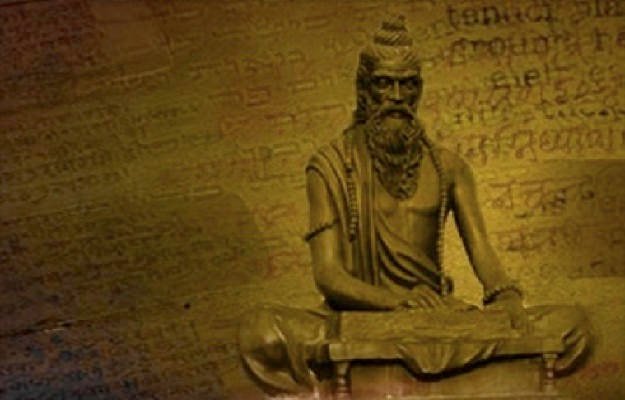what is yoga? -

#Yoga is the science of living right and therefore should be included in this daily life. It works on all facets of the person: #physical, mental, emotional, spiritual and spiritual. Yoga means 'unity' or #'bandana'. The root of this word is the Sanskrit word 'yuj', which means 'join'. Linking this to the spiritual level means to be one of the personal consciousness with universal consciousness. At the practical level, yoga is a means of balancing and coordinating the body, mind and emotions. This yoga or unity is attained through the practice of Asana, Pranayama, Mudra, Bandh, Shakharma and meditation. So there is a way to live yoga and ultimate objective in itself. Yoga first benefits the outer body (physical body), which is a #practical and familiar starting place for most people. When there is an imbalance at this level, the limbs, muscles and veins do not work in harmony, rather they work in opposition to each other. After external body (physical body), yoga works on mental and emotional levels. As a result of the stress and interaction of everyday life, many people are suffering from many mental problems. Yoga probably does not provide treatment but it is a proven method for coping with them. In the last century, Hatha Yoga (which is just one type of Yoga) has become very popular and popular. But awareness of the true meaning of yoga and complete knowledge is definitely growing.
The word #yoga comes from the #Sanskrit root 'yuj', which means union of individual consciousness or soul, universal consciousness or union with soul. Yoga is the five thousand year old style of Indian knowledge. Although many people consider yoga only as physical exercise, where people break, jerk, pull and adopt complex ways of breathing. This is actually the most superficial aspect of this deep science, which reveals the infinite potential of man's mind and soul. The complete essence of life style has been assimilated in yoga science. Gurudev Sri Sri Ravi Shankar says, "Yoga is not just exercise and posture, it is a spiritual height touching emotional integration and mystic element, which gives you a glimpse of beyond all fantasies."
History of Yoga--

#Yoga is in circulation for more than ten thousand years. The most famous of the contemplative tradition is the mention, in the decadent scientist, the oldest surviving literature is found in Rigveda. This again gives us the philosophy of the Indus-Saraswati civilization. From the very same civilization, the Pashupati seal (coin) on which is a figure swaying in yoga posture, which reflects the generality of yoga in that ancient period. However, the oldest Upanishad, also in the Brihadaranyak, has been mentioned as a part of yoga, various physical exercises are mentioned. In the Chhodogya Upanishad, one gets a mention of the practice of pranayama in a eulogy (Ved Mantra) of the Brihadaranyak. As it is, the mention of the present form of "yoga", for the first time, probably mentions in Kuppanishad, it is included for the first time in the last eight classes of Yajurveda, which is a main and important Upanishad. Yoga is seen as a process of journeying here (inner) or developing consciousness. In the famous dialogue, "Yoga Yagnavalkya", which is described in the Upanishad (Greater Aranyakanya Upanishad), in which Baba Yagnavalkya and the disciple Brahmavidya Gargi, many breath-taking exercises, asanas and meditation are mentioned for cleaning the body. Gargi also talks about #Yoga in Chhodogya Upanishad. A group of monks, mentioned in Atharva Veda, have been emphasized by talks (gathering), physical asanas which can be developed in the form of yoga. Even in the cohorts it is mentioned that in ancient times, harsh physical conduct, meditation and penance was practiced by the monks, the Mahatmas, the talks (sabhas) and various monks and saints. Yoga has gradually emerged as a concept and along with the Bhagavad Gita, there is a detailed mention of Yoga in the Mahabharata also in Shant Parvar. There are more than twenty Upanishads and Yoga Vastshas available, in addition to the Mahabharata and Bhagavad Gita already, the yoga is said to be associated with supreme consciousness. Yoga has been discussed in the form of an ancient fundamental form of Hindu philosophy and perhaps it has been mentioned in the most elaborate Patanjali yogasutra. In his second form, Patanjali defines Yoga as something in this form: #"Yoga: Chitta-Vritti detention:" - Yoga thread 1.2 Patanjali's writing also became the basis for Ashtanga Yoga. The five pledges of Jainism and the roots of Yoga of #Buddhism are rooted in Patanjali Yoga Sutras. Hatha Yoga was developed in the medieval era.
How seems to this article,
if good then comment and #upvote please.
#Again if you have any knowledge about this
then ,describe in comment box..
@Thanks steemit friends to attention me...